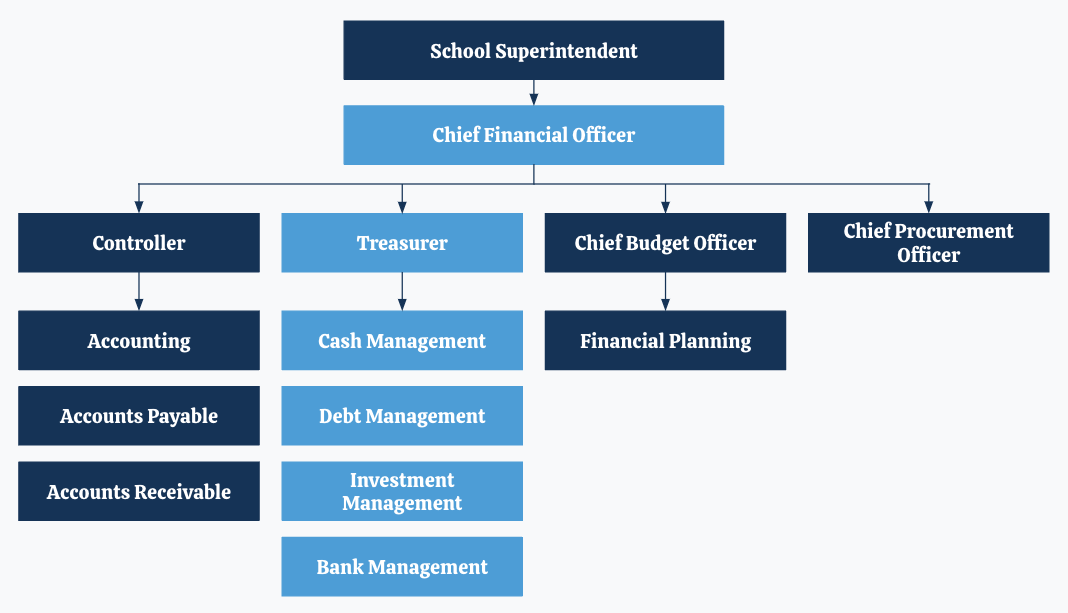The public sector is the portion of the economy that is controlled and managed by the government. US public servants comprise slightly more than 15% of the American workforce—24 million people involved in military and national service at the local, state, and federal levels. These organizations range from municipalities to university systems that provide goods and services, such as public transit, education, infrastructure (roads and utilities), airports and seaports, hospitals, and other not-for-profit organizations
Like their corporate counterparts, public sector finance teams perform a vital role: managing their organization’s financial holdings and obligations. It is an essential function that includes cash management, and more often than not, the management of both investment and debt portfolios of millions or even billions of dollars of public funds. Together, these finance functions are known as treasury management.
Definition:
“Treasury management covers the various tools, techniques, and skills needed to manage an enterprise’s overall financial holdings…This covers all aspects involved in managing an entity’s financial assets, including simple cash management, long-term borrowing and investing, capital management and operational, financial, and reputational risk.”
- Essentials of Treasury Management - 6th edition, 2020
A Breakdown of the Treasury Functions
With several main and supporting roles critical to keeping public sector organizations running, how does a treasury team organize their day-to-day? Here is a breakdown of Treasury Management in public sector organizations:
Cash Management
The treasury team is responsible for the bank accounts used to collect, disburse, and ideally, concentrate funds. The accounts hold balances and enable transactions that are the basic tools used to ensure cash is in the right place at the right time - the treasury's primary responsibility. In the public sector, there are often additional constraints as well as safeguards to ensure the safety of public funds.
Investment Management
The treasury team owns the investment policy that outlines the processes and procedures to select and purchase the best investments and/or asset managers when excess cash is available. Investment management in the public sector is anchored in prioritizing safety, liquidity, and return – in that order. An extension of investment management is that treasury teams often manage retirement plan administration for public employees.
Debt Management
If funds are needed due to working capital shortages or planned capital improvements, treasury teams access the bond markets. For the public sector, this means the tax-exempt bond market and the treasury team lead the process of delivering funds by issuing new money bonds or saving money by issuing refunding (refinancing) bonds. Working with their network of public finance specialists including investment bankers, financial advisors, bond and disclosure counsel, and rating agencies, the treasury team guides the process to size, rate, price, and sell bonds.
Financial Risk Management
Financial risk management is another iteration of accessing and buying financial services, technology (e.g. insurance or derivative hedging), and other third-party services (e.g. payment portals).
Since all financial holdings and obligations at some point interact with financial service providers, the public treasury team is the default owner of the relationships with the financial services industry. Defining treasury via its ownerships explains the width of responsibility seen across the spectrum of roles, both internally and externally – from the analyst responsible for the daily cash positioning to the treasurer managing billions in debt.
Public Finance Department Structure
Where does a typical treasury department sit within an organization? The exhibit below illustrates where this team may sit within a school district. Ultimately, where treasury sits and how it’s structured will vary across organizations depending on its size (local, state, or federal) and maturity. The Association for Financial Professionals defines levels of treasury team maturity as:
- Foundational - lack of dedicated or centralized treasury staff /treasury tasks at a subsidiary level
- Developing - dedicated treasurer with some support staff/centralization of some core treasury activities
- Established - clear central treasury structure and governance model/adequate staff /experienced qualified treasury team
- Enhancing - internal consultant to other corporate functions and subsidiaries
- Strategic/Optimized - optimal centralization of activities/strategic, proactive business partner/advisor to CFO on complex business investments
Example: School District Finance Department

In this example, the treasury department is at least an Established treasury team on the maturity spectrum with a clear central structure and adequate staffing covering each of the major treasury responsibilities. With a dedicated debt manager, it likely has an expansive debt portfolio requiring it to serve as an internal consultant more reflective of an Enhancing position. Ideally, it’s moving towards a Strategic/Optimized role within the organization.
Strategic Treasury Roles
This is not to say that treasury teams don't have strategic responsibilities. They do, along with operational and tactical level responsibility. The fundamental task of cash management, daily cash positioning, is an operational function that provides the foundation for forecasting on a tactical level. Building a reliable cash forecast allows treasury teams to deliver their strategic responsibility of producing a cash budget used to plan the organization’s cash needs alongside the financial budget. Similar relationships exist in the investment and debt areas for treasury teams.
Treasury Responsibilities in the Public Sector

In summary, treasury management is responsible for the financial assets of the organization and the relationships that make cash, investment, and debt management happen. This function requires collaboration across a number of both internal and external departments, meaning individuals need the ability to have short, medium, and long term views to support the operational, tactical, and strategic needs of their organization.
Related Municipal Finance Reading
- DebtBook's Premium/Discount Amortization Methodology Explained
- Advance Refundings - The Muni Gamble
- A 'Game Changer' for the City of Memphis
Disclaimer: DebtBook does not provide professional services or advice. DebtBook has prepared these materials for general informational and educational purposes, which means we have not tailored the information to your specific circumstances. Please consult your professional advisors before taking action based on any information in these materials. Any use of this information is solely at your own risk.







.jpg)
.jpg)
.jpg)
